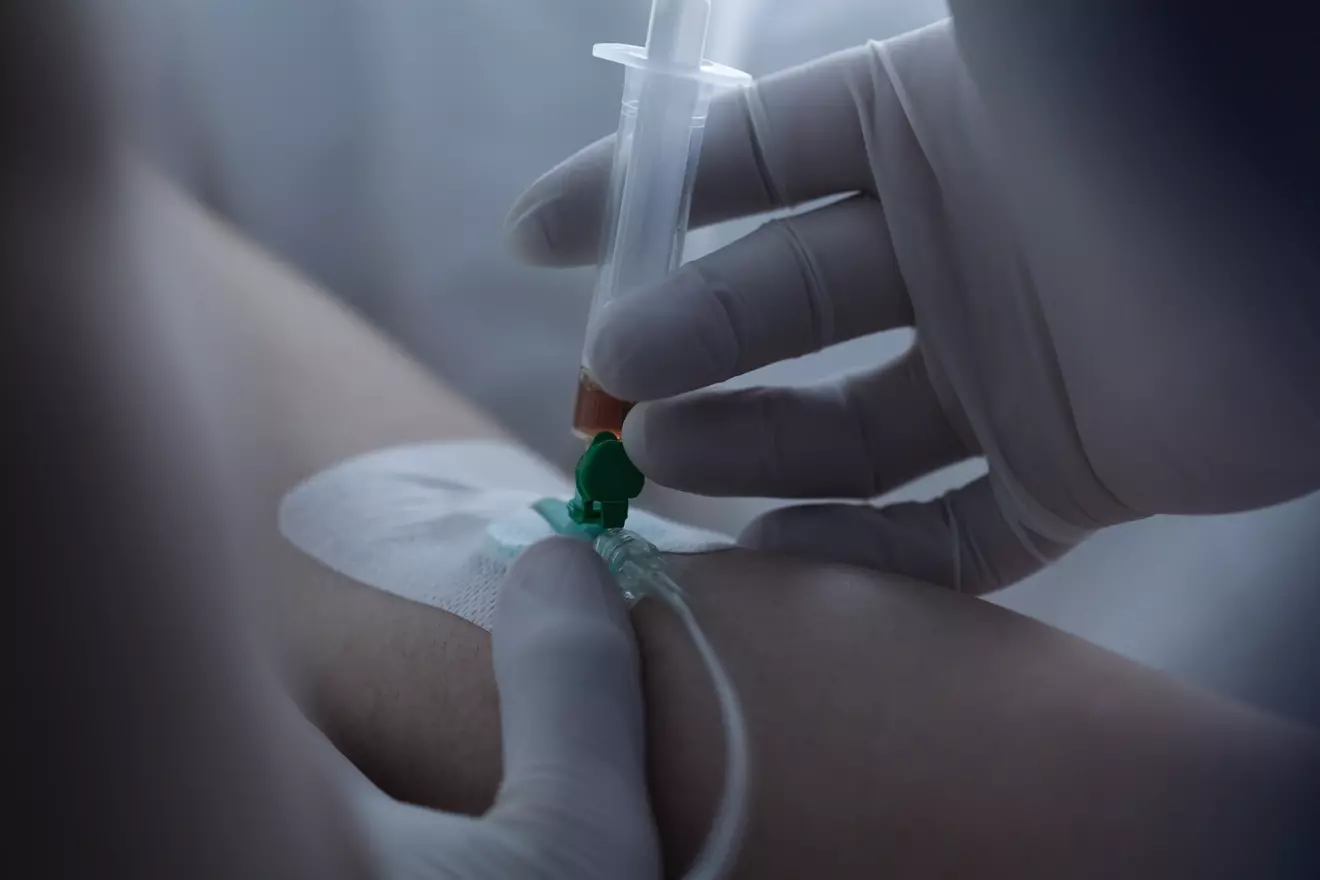Last Updated on November 27, 2025 by Bilal Hasdemir

The world of brain tumor treatment is evolving rapidly, bringing new hope to patients diagnosed with brain cancer. Advances in brain cancer medicine have significantly improved care, particularly for aggressive types such as glioblastoma.
One notable breakthrough came in 2024, when the FDA approved vorasidenib for certain brain cancers. This marks a major leap forward in precision therapy, offering targeted treatment options with potentially fewer side effects. Keeping up with the latest developments in brain cancer medicine is crucial for both doctors and patients, ensuring access to the most effective drugs, cutting-edge methods, and innovative care strategies that can extend survival and enhance quality of life.
Key Takeaways
- New treatments are transforming the landscape of brain tumor care.
- The FDA’s approval of vorasidenib in 2024 is a significant advancement.
- Staying informed about the latest therapies is key for patients.
- Institutions like Liv Hospital are leading in brain tumor innovation.
- Seven essential therapies are changing brain cancer treatment.
The Evolving Landscape of Brain Tumor Treatment
The field of brain tumor treatment is changing fast. New research and treatments are leading the way. These changes offer hope for better care for patients.
Recent Advances Reshaping Patient Care
New targeted therapies have made a big difference. Scientists at Tohoku University have created gbm chemotherapy drugs that work better and are safer. Now, treatments like immunotherapies and personalized medicine are being used too.
Thanks to advanced tech, doctors can understand tumors better. This helps them create more precise treatment plans. Here’s a look at how treatments have changed:
| Treatment Aspect | Traditional Approach | Modern Approach |
| Treatment Specificity | Less targeted, affecting both cancer and healthy cells | Highly targeted, focusing on specific cancer cells |
| Toxicity Levels | Higher toxicity, leading to more side effects | Lower toxicity, reducing side effects |
| Patient Outcomes | Limited improvement in survival rates | Improved survival rates and quality of life |
Shift from Traditional to Targeted Approaches
The move to targeted treatments in brain cancer therapies is a big step forward. These treatments aim at specific tumor traits, making care more precise. This has led to better results and fewer side effects for patients.
With ongoing research, the future of treating brain tumors is bright. Studies are looking into even more brain tumor treatment options.
Understanding Brain Cancer Types and Treatment Selection
It’s important to know the different types of brain tumors to choose the best treatment. Brain cancer is complex, with many types of tumors. Each type has its own characteristics and how it behaves.
Common Brain Tumor Classifications
Brain tumors are divided into primary and metastatic types. Primary tumors start in the brain, while metastatic ones come from other parts. Gliomas, meningiomas, and medulloblastomas are common primary tumors.
The World Health Organization (WHO) system is used to classify brain tumors. It looks at their appearance and genetic makeup. This helps doctors decide how to treat them.
For example, glioblastoma is very aggressive and needs strong treatment. But a low-grade glioma might need a gentler approach.
How Tumor Genetics Guide Treatment Decisions
Tumor genetics are key in choosing treatments for brain cancer patients. New tests can find specific genetic changes in tumors.
“The presence of certain genetic markers, such as IDH mutations, can influence treatment choices and predict patient outcomes.”
For instance, some gliomas with IDH mutations might do well with targeted treatments. But tumors without these mutations might need different treatments. Knowing a tumor’s genetics helps doctors create a treatment plan just for that patient.
Vorasidenib: The 2024 FDA Breakthrough for IDH-Mutant Gliomas
The FDA approved vorasidenib in 2024. This was a big step forward for treating IDH-mutant gliomas. This type of brain cancer has few treatment options.
Mechanism of Action and Patient Selection
Vorasidenib targets the mutant IDH1 and IDH2 enzymes found in IDH-mutant gliomas. This targeted approach can lead to fewer side effects than traditional chemotherapy. It’s important to choose the right patients, using genetic testing to find those with IDH mutations.
The mechanism of action involves stopping the production of 2-hydroxyglutarate (2-HG). This metabolite builds up in IDH-mutant tumors and helps them grow. By lowering 2-HG levels, vorasidenib can slow tumor growth and help patients live longer.
Clinical Evidence: Doubling Progression-Free Survival
Clinical trials have shown vorasidenib’s benefits for patients with IDH-mutant gliomas. The trials found a doubling of progression-free survival rates compared to those on a placebo. This shows how effective the drug is.
| Treatment | Progression-Free Survival |
| Vorasidenib | 24 months |
| Placebo | 12 months |
This breakthrough shows the promise of targeted therapies like vorasidenib. It offers new hope for managing brain cancers, helping both patients and doctors.
Temozolomide: The Gold Standard in Brain Cancer Medicine
Temozolomide has changed how we treat brain tumors. It’s an oral chemotherapy that is a key part of brain cancer treatment. It helps patients manage their treatment well and has shown great results in clinical trials.
Temozolomide works by damaging the DNA of cancer cells. This stops them from growing and reproducing. It’s a key way to slow down tumor growth.
Targeting Brain Tumors Effectively
Temozolomide is special because it can get past the blood-brain barrier. This is a big challenge in treating brain cancers. It targets tumor cells well while protecting healthy tissue.
Key benefits of temozolomide include:
- Oral administration, making it easier for patients to take
- Effective penetration through the blood-brain barrier
- Proven track record in clinical trials and real-world applications
Optimizing Treatment Schedules
Researchers are working to find the best dosing schedules. They want to make the drug work better while reducing side effects. They’re looking at different dosing plans to help patients more.
| Treatment Regimen | Dosing Schedule | Primary Benefits |
| Standard | 150-200 mg/m ² for 5 days every 28 days | Established efficacy, manageable side effects |
| Alternative | Continuous low-dose scheduling | Potential for improved outcomes, reduced resistance |
By improving how we use temozolomide, doctors can give better care to brain cancer patients.
Safusidenib: Targeted Therapy for Specific Genetic Mutations
Targeted therapy has made a big step forward with safusidenib for certain brain tumor genetic mutations. This drug is made to target specific genetic changes that cause some brain cancers to grow.
Molecular Targeting Mechanism
Safusidenib works by selectively inhibiting mutant enzymes in cancer cells’ metabolism. This targeted approach leads to more precise treatment with fewer side effects than traditional chemotherapy. It focuses on the genetic mutations that drive tumor growth, providing a personalized treatment.
Patient Outcomes in Clinical Trials
Clinical trials show safusidenib’s promising results, mainly in patients with specific brain tumor genetic mutations. The data show it can greatly improve progression-free survival and, in some cases, overall survival. These results highlight safusidenib as a valuable treatment for patients with few other options.
The success of safusidenib in trials emphasizes the need for genetic testing to find the right patients. As research goes on, safusidenib’s role in treating brain tumors is expected to grow, bringing hope to those with specific genetic mutations.
Dordaviprone: Disrupting Cancer Cell Metabolism
Dordaviprone is a new way to fight brain cancer by targeting how cancer cells use energy. This therapy aims to use the unique ways cancer cells use energy against them. It offers a fresh approach to treating brain tumors.
Novel Mechanism of Action
Dordaviprone disrupts the energy pathways that cancer cells need to grow and survive. Unlike old treatments that affect many cells, dordaviprone targets cancer cells’ energy use. This could mean fewer side effects and better results for patients.
Current Development Status and Early Results
Early tests of dordaviprone have shown promising results. Some patients have seen big drops in tumor size and better survival chances. Now, dordaviprone is being actively investigated in more trials. Researchers are working to find the best way to use it and see how well it works against different brain cancers, like glioblastoma.
Immunotherapy Approaches Transforming Brain Cancer Treatment
Immunotherapy is changing how we treat brain cancer. New medicines for glioblastoma now include immunotherapies. This opens up new ways to fight the disease.
This method uses the body’s immune system to fight cancer. It’s a more focused and possibly less harsh treatment. Immunotherapy is bringing new hope to those with few treatment options.
Checkpoint Inhibitors in Recurrent Glioblastoma
Checkpoint inhibitors are a type of immunotherapy. They help the immune system attack cancer cells better. In clinical trials, they’ve shown promise for treating recurrent glioblastoma.
- Enhance immune response against glioblastoma cells
- Improve overall survival rates
- Offer a new treatment option for recurrent cases
Drugs like nivolumab and pembrolizumab are being studied for glioblastoma treatment. Early results are promising. Checkpoint inhibitors are a big step forward in treating recurrent glioblastoma.
Vaccine-Based Therapies and Personalized Immune Approaches
Vaccine-based therapies are another exciting area in brain cancer treatment. These vaccines aim to get the immune system to fight cancer cells.
Key aspects of vaccine-based therapies include:
- Personalization based on individual tumor genetics
- Targeting specific antigens on cancer cells
- Potential for combination with other immunotherapies
Personalized neoantigen vaccines are being tested in trials. They show early success in treating glioblastoma. This approach could lead to better patient outcomes and more tailored treatments.
Radiation-Sparing Drug Regimens: Protecting Cognitive Function
The push to keep brain function sharp has led to new treatments. These treatments aim to reduce or replace radiation therapy. This helps protect patients’ brains from harm.
Researchers are testing different drugs in clinical trials. These drugs might help avoid radiation therapy. This could improve patients’ quality of life and brain health.
Medications That May Delay Radiation Necessity
Several drugs are being studied to see if they can delay radiation therapy. These include:
- Vorasidenib: It’s shown to work well for certain brain tumors, possibly avoiding radiation.
- Safusidenib: This targeted therapy is for specific genetic changes, a hopeful alternative to radiation.
- Dordaviprone: It’s a new way to fight cancer by changing how cells work. It’s being tested to see if it can reduce radiation use.
Measuring Cognitive Outcomes with New Approaches
To see if these drugs work, scientists are using new ways to check brain health. They’re using:
- Neuropsychological tests to check brain function.
- Imaging like MRI to watch how tumors and brains change.
- What patients say about their brain health to get a full picture.
By using these methods together, doctors can better understand how these drugs affect the brain. This helps make treatments better for brain tumor patients.
Combination Strategies: Synergistic Treatment Protocols
Recent breakthroughs in brain cancer treatment focus on combining different therapies. This approach aims to improve outcomes for patients with aggressive brain tumors.
Researchers mix various treatments to tackle cancer cells more effectively. Drug cocktails that blend chemotherapy, targeted therapy, and immunotherapy are being tested. They aim to see if these combinations work well and are safe.
Drug Cocktails Showing Promise in Clinical Trials
Clinical trials are looking into mixing temozolomide with newer drugs like safusidenib or dordaviprone. These combos aim to boost the fight against tumors and reduce resistance.
Early trials suggest that some mixes can greatly extend the time patients live without their tumors growing. This is good news for glioblastoma patients.
Managing Toxicity in Multi-Drug Regimens
Combining treatments is promising but also raises concerns about side effects. It’s key to keep patients’ quality of life high.
To lessen side effects, scientists are working on better dosing and protective agents. This way, doctors can offer more effective treatments without harming patients too much.
Limitations of Current Brain Tumor Medications and Ongoing Research
Even with big steps forward in treating brain cancer, today’s medicines have big hurdles to get over. Brain tumors are tricky to tackle because of the blood-brain barrier and how tumors can resist treatment.
Blood-Brain Barrier Challenges
The blood-brain barrier is a big problem for treating brain tumors. It blocks many drugs, including some brain tumor drugs, from reaching the tumor. Scientists are looking into new ways to get drugs past this barrier and into the tumor.
- Nanoparticle-based delivery systems
- Focused ultrasound techniques
- Chemical modification of drugs to improve permeability
Addressing Treatment Resistance Mechanisms
Treatment resistance is a major limitation of today’s brain tumor medicines. Tumors can grow resistant to treatment in many ways, like genetic changes and new signaling pathways. Researchers are working hard to understand these resistance ways to find new ways to beat them.
To fight resistance, scientists are trying combination therapies and personalized medicine. These approaches are made just for the tumor’s unique genetic makeup.
Conclusion: Navigating Brain Cancer Treatment Options in 2025
Finding the right treatment for brain cancer can be tough. There are many therapies out there, each suited for different patients. New medicines for glioblastoma and other brain cancers offer hope for better treatments.
Recent discoveries, like Vorasidenib and Safusidenib, are showing great promise. Immunotherapy and combining treatments are also changing how we fight brain cancer. These advances mean patients have more tailored and effective options.
It’s important for patients and doctors to keep up with the latest in brain cancer treatment. Knowing about all the options helps people make better choices. This can lead to better care and a better life for those with brain cancer.
FAQ
What are the latest brain cancer medicines approved by the FDA?
The FDA has approved new treatments for brain cancer. Vorasidenib is now available for IDH-mutant gliomas. Other drugs like temozolomide, safusidenib, and dordaviprone are also being used or researched.
How do brain tumor genetics influence treatment decisions?
Genetics are key in choosing the right treatment for brain cancer. Mutations, like IDH, help pick targeted therapies like vorasidenib and safusidenib.
What is the mechanism of action of vorasidenib in treating IDH-mutant gliomas?
Vorasidenib targets mutant IDH1 and IDH2 enzymes. These enzymes are linked to IDH-mutant gliomas’ growth and spread.
How does temozolomide work in treating brain cancer?
Temozolomide is an oral chemotherapy. It damages cancer cells’ DNA, stopping their growth and spread.
What are the benefits of radiation-sparing drug regimens in brain cancer treatment?
These regimens aim to avoid radiation therapy. This helps protect patients’ cognitive function.
What are the challenges posed by the blood-brain barrier in brain cancer treatment?
The blood-brain barrier limits medication delivery to the brain. Researchers are working on new strategies to overcome this barrier.
How do combination strategies work in brain cancer treatment?
Combination strategies use multiple medications together. This approach can improve treatment outcomes and manage side effects.
What is the role of immunotherapy in brain cancer treatment?
Immunotherapy, like checkpoint inhibitors and vaccines, is being explored. It aims to use the immune system to fight cancer.
Can brain tumors be cured by medicines alone?
Medicines have greatly improved brain cancer treatment. But, a cure depends on many factors, including cancer type and stage, and patient characteristics.
What are the common side effects of chemotherapy drugs for brain cancer?
Common side effects include nausea, fatigue, hair loss, and increased infection risk. Managing these side effects is key to successful treatment.
How do glioblastoma chemotherapy drugs work?
Glioblastoma drugs, like temozolomide, target fast-growing cancer cells. Researchers are always looking for new and better chemotherapy options.
References:
- Barbato, M. I. (2025). Vorasidenib for IDH-mutant Grade 2 Astrocytoma or Oligodendroglioma. Frontiers in Oncology. https://pmc.ncbi.nlm.nih.gov/articles/PMC12416742/






